How to make heating in the house with your own hands: the
The construction of a private house involves the mandatory arrangement of an efficient heating system, otherwise it will be simply impossible to live in it all year round because of the low temperatures inherent in our winters. Of course, you can invite qualified specialists to install the necessary equipment, but the price of payment for their services is very substantial. In order to save, you can perform all or at least part of the installation work yourself, which will be discussed in this article.
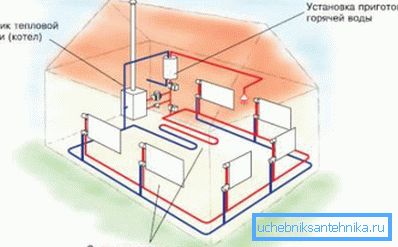
General provisions
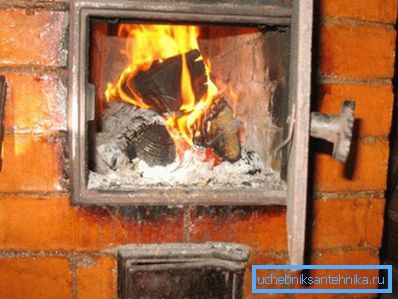
How to make the heating in the house yourself? To solve this problem, you can choose one of several options:
| Type of heating | pros | Minuses |
| Solid fuel stoves |
|
|
| Electric heaters (converters, infrared lamps) |
|
|
| Boilers with water circuits |
|
|
Tip: solid fuel stoves are perfect for heating baths, greenhouses and small country houses away from the city. Their power for this is quite enough, but you do not have to such objects to make additional communications.
So, each system has its pros and cons, but if you want to be confident in the constant, safe and economical heating of your cottage, then the choice is definitely to stop the boilers with water circuits. And so that the installation of such equipment does not seem so difficult to you, we will now analyze all its subtleties.
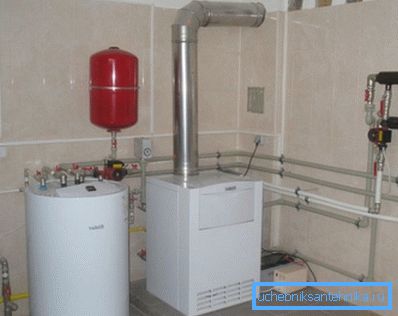
Basic concepts
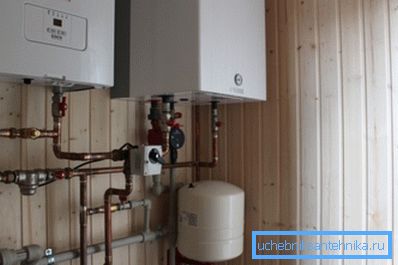
Before you do the heating in the house, you need to familiarize yourself with some basic concepts:
| Item Name | Description |
| Thermal point | Most often it is a separate room in which all the equipment that controls the heating system is placed, allowing you to adjust the flow and characteristics of the coolant |
| Pipeline | The design of the pipes engaged in the transport of fluid |
| Radiators | Devices that allow to extract thermal energy from the coolant and transfer it to the room |
| Thermostats | Special devices that regulate the gas pressure in the event of a change in the temperature regime of the system |
| Direct current | The part of the pipeline that supplies the heated water to the batteries |
| Reverse current | The part of the pipeline that brings the cooled water back to the boiler |
| Boiler | Unit performing the heating of water |
| Expansion tank | Container containing heated liquid |
| Circuit | Closed design that includes the above elements |
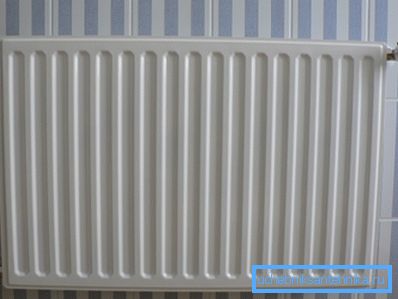
Types of coolant circulation
There are two options for the implementation of the movement of fluid in the heating pipes:
Natural circulation
How to make the heating in the house so that it does not depend on electricity? This requires realizing the natural circulation of fluid in the circuit.
The corresponding scheme and principle of operation will be as follows:
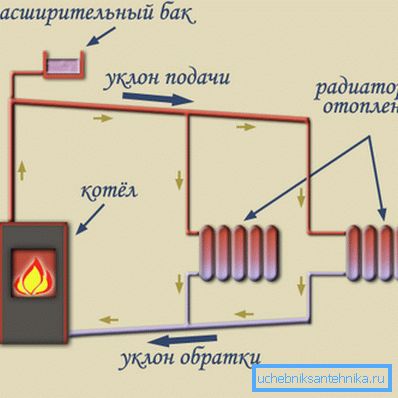
- The heated water, having a lower density, is pushed into the expansion tank.
- From there it moves in direct current, set at a certain bias towards the radiators.
- After the liquid gives off heat, it returns to the reverse current, which also has an appropriate angle of inclination, into the boiler.
The advantages of this design:
- No dependence on the availability of electricity.
- Relatively low installation cost.
- Economical operation that does not require additional costs for electricity.
The main disadvantages in this case are:
- Limit the length of the possible contour. The system will be effective only if the total length of the pipeline does not exceed thirty meters.
- Difficult installation instructions requiring precise observance of pipeline slope.
Tip: the described scheme is best suited for country houses, which still do not usually differ in large size, but may be cut off from the electrical network due to the often occurring out-of-town feature of accidents.
Forced circulation
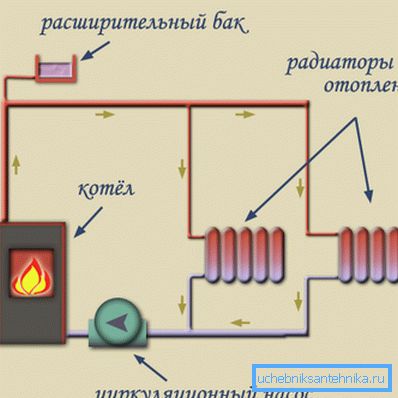
If the question is, how to make the heating of a large house yourself, then the previous version definitely does not suit. In this case, you should resort to the arrangement of forced circulation. It is noteworthy that this only requires the installation of an additional pump, and the pipeline itself is mounted in accordance with the design wishes without any additional requirements.
Pros:
- It is possible to adjust the temperature in the radiators.
- There are no restrictions on the area covered. It all depends on the power of the pumping equipment.
And the resulting cons:
- Dependence on the availability of electricity supply.
- Additional costs for the necessary equipment.
Despite some limitations, this option is gaining more and more popularity, gradually displacing the outdated self-flowing liquid circulation in the heating circuit.
Equipment selection
To make heating in the house, you must first acquire the necessary equipment to perform this task.
Boilers
This is the most important part of the heating system, which is, in fact, its heart. It is a closed tank in which water is heated.
Depending on the fuel used may be:
- Gas. The most popular, practical and economical option. For their work using natural gas, the cost of which is relatively low. The only condition is the presence of a gas pipeline. Can be installed both on the floor and on the wall. They are easy to operate and equipped with autonomous controls.

- Solid fuel. Iron or steel units designed to be burned to produce heat, solid fuels such as firewood, coal, or peat. Can not function without periodic human intervention, installed exclusively on the floor.

- Electric. Fully autonomous, lightweight, maximum safe, but at the same time very expensive devices to use.
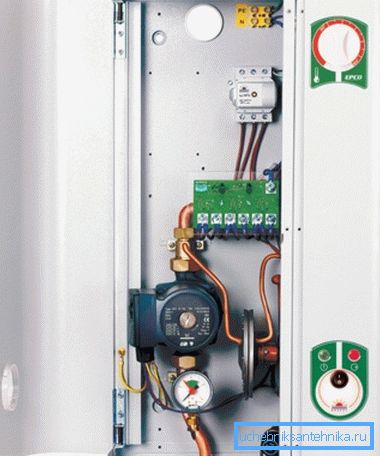
Pipes
How to make the heating in your house as economically as possible?
In this case, plastic pipes are ideal for heating, which have several advantages:
- Low cost.
- Ease of processing and installation.
- A light weight.
And disadvantages:
- The temperature limit of ninety-five degrees Celsius.
- Relatively weak mechanical strength.
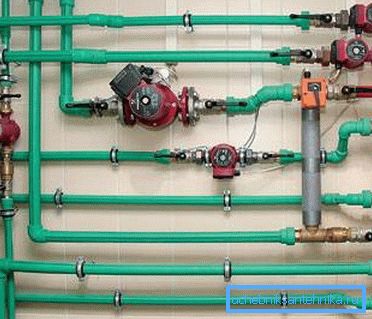
Also, homemade home heating can be created from metal products.
Pros:
- No temperature limitations.
- High mechanical strength.
Minuses:
- High price.
- Susceptibility to corrosive processes.
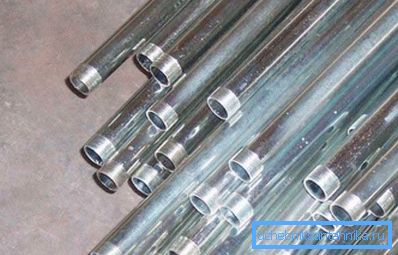
Tip: combined metal-plastic pipes, which successfully combine the advantages of both materials, are ideal for a private house.

Radiators
By design, heat-accumulating devices can be the following:
- Sectional. The sections themselves are made by high-pressure casting, but they are interconnected into a single structure by threaded connections. Very easy to install.
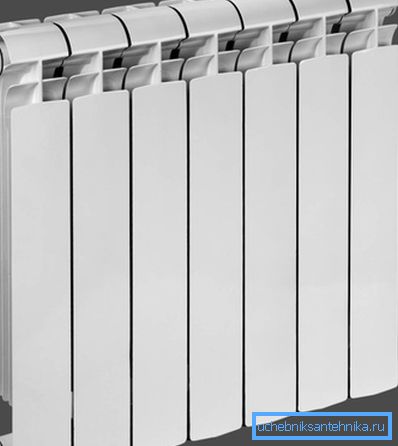
- Panel. Represent the sheet elements welded among themselves.
- Tubular. They withstand pressure up to 15 atmospheres, which makes them the most reliable, but at the same time they are very expensive.
Assembly work
Now we will directly analyze how to make heating in the house.
Boiler installation
Let's analyze the installation of a more convenient wall unit:
- With the help of anchors we fix a special bar for hanging the equipment, which is completed with each boiler.
- We hang the device and connect it to the chimney.
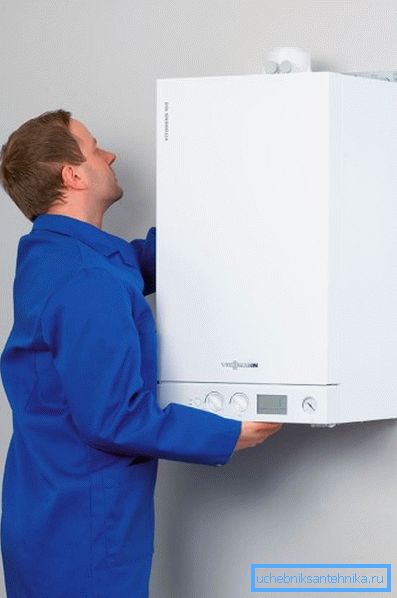
- We bring and fasten the pipeline.
It is important to know: the gas pipe must always be connected by authorized representatives of the relevant service, so don’t even try to do it yourself.
Installation of radiators
Since the heating in the house can be done correctly only with a complete set of all components, we note that in addition to the batteries themselves, you will also need: brackets, valves, dowels, Mayevsky taps, plugs and plugs.
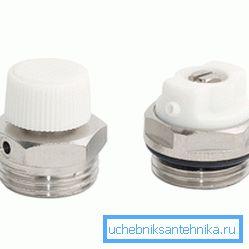
Further:
- Under the windows we apply the markup for the installation of brackets.
- We drill the corresponding holes.
- We collect the radiator.

- Fix the device on the wall.
Creating a pipeline
This process depends on the pipe from which material you choose:
- Plastic. Here we take a special pipe soldering iron, which heats the edges of the products to the melting point, which allows them to be reliably soldered to each other. Finished parts of the contour are fixed on the wall with special clamps.

- Metallic. Here you can go two ways:
- Select a threaded connection and use a die to perform threading at the joints.
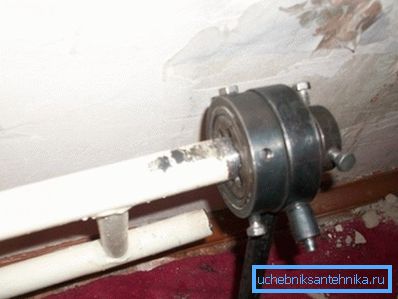
- Select welding and make the necessary connections using a welding machine. This option is quick and practical, but requires special skills.
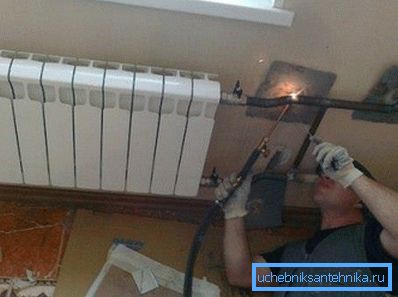
Conclusion
We looked at how to make home heating yourself, from choosing a wiring diagram and the necessary equipment, to installing the main elements of the system.
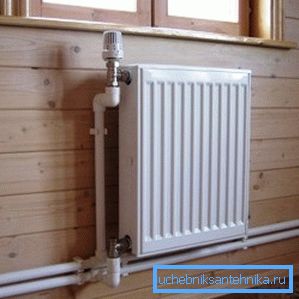
On the video you can read additional materials. Follow the above recommendations, and you will succeed.